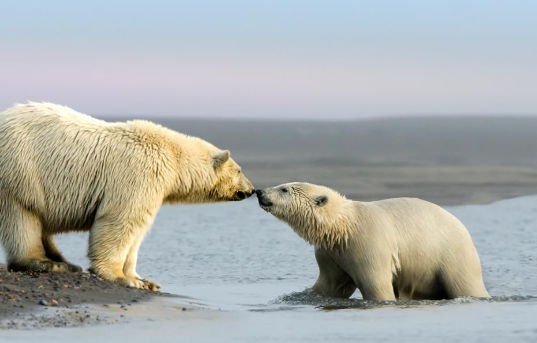Communication is essential for all living beings, but while humans rely heavily on language, animals use a wide array of methods to convey messages to one another. From the high-pitched songs of birds to the intricate dances of bees, the animal kingdom employs a stunning variety of communication strategies. Understanding how animals communicate not only gives us insight into their behavior but also helps us appreciate the complex social structures that exist across species.
1. Sound: The Universal Language
Sound is one of the most common ways animals communicate. Birds, for example, sing to attract mates, defend territory, or signal distress. The songs of male birds, such as the Northern Mockingbird, can be incredibly complex, incorporating a variety of notes and calls. Some species, like whales and dolphins, communicate using a series of clicks, whistles, and songs that can travel for miles underwater. Dolphins, known for their intelligence, even use “names”—distinctive whistles that identify individuals.
In the wild, even seemingly simple animals use sound to communicate in elaborate ways. Elephants produce low-frequency infrasound that can travel long distances, allowing them to communicate over vast areas. This sound is often used to warn of danger or to coordinate group movements. In fact, elephants have been observed responding to these calls, even when they are miles apart, demonstrating an intricate understanding of communication and social bonds.
2. Body Language and Visual Signals
While sound plays a crucial role, many animals rely heavily on body language and visual cues. Chimpanzees, for example, use facial expressions, gestures, and posture to convey emotions, intentions, or warnings. A raised eyebrow or a showing of teeth in many species can indicate aggression or dominance, while other body language, such as grooming, signals affection or friendship.
Among insects, visual communication is also widespread. Honeybees, for instance, engage in a “waggle dance” to inform other members of the hive about the direction and distance of a food source. The dance consists of a series of movements that encode specific information about the location of nectar, with the direction of the dance corresponding to the angle of the sun.
3. Chemical Signals: Scent as Communication
Chemical signals are another form of communication that is often overlooked. Animals like ants, for instance, leave trails of pheromones to guide other members of the colony to food sources. These chemical cues are detected by the ants’ antennae, which help them follow the scent trail. Pheromones also play a role in mating behavior; many species of mammals, including cats and dogs, release these chemicals to signal readiness for reproduction or to mark their territory.
4. Tactile Communication
Touch is also an essential form of animal communication. For example, mother animals often groom their young as a way to bond and communicate affection, but it can also serve other purposes, such as reassurance or a method of teaching. In some primates, grooming is an important social activity that helps maintain group cohesion and form alliances.

Animal communication is rich and diverse, from the visual cues of a bird’s feathers to the chemical signals of ants. Each species has developed its own set of tools to navigate its environment, communicate with others, and ensure survival. By studying these methods, scientists gain deeper insights into the complexities of animal behavior and the ways in which animals interact with each other and their surroundings. The world of animal communication is vast, and every discovery adds another layer of wonder to the natural world.
